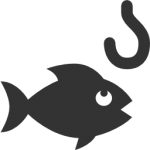The face of change
One of Facebook’s best constants is it’s constantly changing. Like the change of the seasons, Facebook regularly kicks off rat races between developers who change how Facebook spreads content and users who must re-learn Facebook from the ground up. 2014's rat races were no different.
Page managers especially are affected each time Facebook changes its Newsfeed algorithm. The beginning and tail end of 2014 kicked off some major algorithm changes, and to help page managers cope, here is a quick guide to help managers reach their elusive audiences...

What is the “Facebook algorithm?”
Facebook algorithm is a fancy way of saying how Facebook decides what, when, and most importantly, how long posts appear in a user’s Newsfeed. A typical Newsfeed is a mix of friends, pages, and news stories. However, the exact ratio of content and how long content sticks around depends on two things:
- User connections
- User activity (likes, comments, and shares)
The gist? It comes down to who your audience’s friends are, who their friend’s friends are, and most importantly: what all of them are clicking on as they hop through Facebook.
The new algorithm
Earlier this year, the algorithm tipped heavily in favor of trending topics. The end result is stories with high engagement (likes, comments, and shares) stuck like sticky posts to the top of Newsfeeds. However, this backfired a bit when “old” posts stuck around too long and other user-interest stories couldn’t break in, so Facebook tweaked the formula once again.
The secret life of a Facebook page manager
If you use Facebook pages to advertise your business or product, the new algorithm just made your private struggle with outreach and engagement a little harder. While the #1 rule hasn’t changed, remember these tips as you craft your Facebook page posts:
#1. Post relevant and valuable content for your audience
This can’t be stressed enough: There is no substitute for good content. Good content is your #1 rule to always follow, and when we refer to content, we specifically refer to outgoing links. Cat memes and click bait can only get you so far if the content on the other end of the link is a total disappointment. Since your audience presumably surfs Facebook every day, think of it from their perspective: what do they want to find while in their “happy place” and can you regularly provide it?
#2. Avoid click bait
Click bait refers to headlines or photos that always require users to click to find out more. As an avid Facebook user yourself, you may remember the mid-2014 influenza of phrases like this:
- You’ll NEVER believe what happened…!
- CLICK to find out!
- ...when something UNEXPECTED happened!
The exclamation marks and capital letters may exaggerate a wee bit, but Facebook users -- and Facebook itself -- caught on to this toxic phenomenon. Facebook’s new algorithm declared war on click bait and here are its weapons:
Facebook monitors the ratio of actual likes, comments, and shares versus link clicks, and how long users spend at the link before returning to Facebook. If Facebook users click the bait then immediately retreat to Facebook, chances are your audience has declared your article click bait and so will Facebook. The end result is your post will descend to the bottom of the Newsfeed and eventually disappear from user screens altogether.
#3. Include engaging, relevant photos
Now more than ever, visual media is a Facebook necessity. Not only do photos catch user attention and increase engagement, but the algorithm favors photos over most other post types. Videos are also good visual media but do not organically travel as far as they did with the previous algorithm. You shouldn't avoid videos altogether, but know they don’t have the same organic-reach power as previously had under the older algorithm.
The verdict? Always include a relevant photo, choose a photo over a video, but choose a video if it's exactly the kind of content/tone you want to portray in your post.
#4. Avoid overusing call-to-actions or memes
"Please like and share" requests are OK to use but should be used sparingly. The more content with like-baiting on your Facebook page, the most likely your posts will drop into the Newsfeed bottom bin.
The same philosophy applies to memes: use in moderation and only use if the meme applies to your content! For irrelevant memes, use your own Facebook profile and spread the fun amongst your friends.
![]()
#5. Think in terms of clicks
The more clicks, likes, comments, and shares your post receives, the quicker it’ll rocket to the top. However, when and how long your post receives clicks matters now more than ever. If your post generates clicks immediately, it’ll blast straight to the top. But unless clicks keep up the pace, your post will descend as quickly as it launched. Depending on your intent, this is a good or bad thing.
As you think in clicks, here's question to ask yourself: Does your article have a built-in expiration date or is it “evergreen?” (Evergreen is a journalism-industry term for a story that is always relevant.) For example, if your content is a breaking news story, the natural decrease of interest over time will knock your post off the Newsfeed. However, a more evergreen article (perhaps something informational or humorous) may stay relevant just a bit longer and get you even more Facebook exposure.
Overall, evaluate your goals and put together a healthy mix of clickable content. It's OK to be flash-pan famous on occasion and save your energy for longer-lived articles. A little content diversity is always a good thing.
Creating your social media plan
These rules aren’t the only challenges Facebook page managers face, but as you forge your social media plans into the end of 2014 into 2015, arm yourself with these rules to live by and keep soldiering on in the face of change.
Preview: optimizing post time with Facebook Insights
Our next blog will focus on another side of working with the Facebook algorithm: Analyzing your Facebook Insights and targeting the optimal time to post your content. Prepare for a little experimentation, analyzation, and a tiny bit of the scientific method. Till next time.








